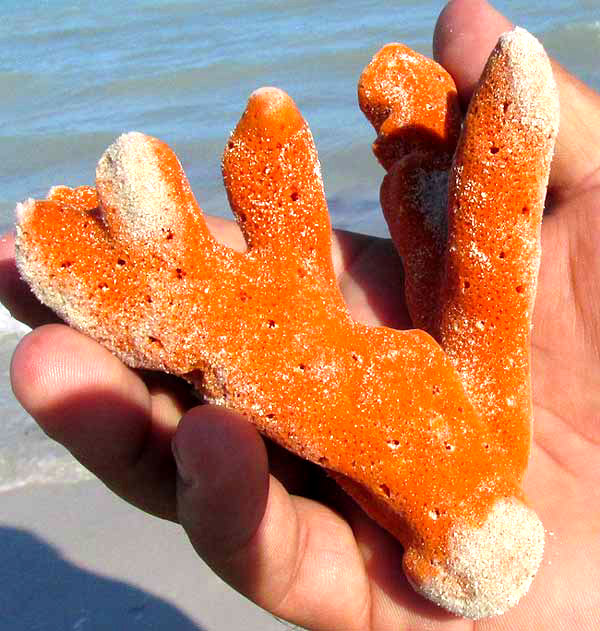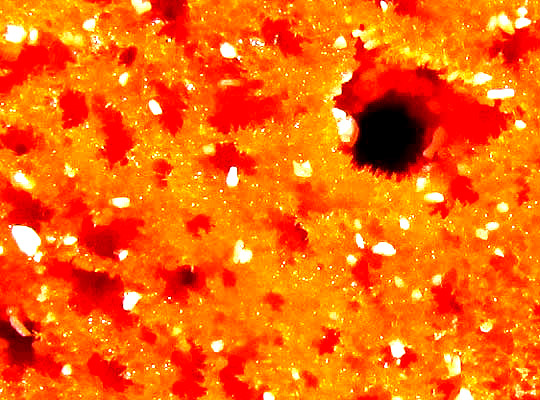Excerpts from Jim Conrad's
Naturalist Newsletter

from the December 21, 2014 Newsletter issued from Río Lagartos, on the Yucatan Peninsula's northern coast (~N21.60°, ~W88.16°), Yucatán state, MÉXICO
ORANGE BRANCHING SPONGE
On the Gulf of Mexico side of the thin finger of land separating Ría Lagartos Estuary from the sea, a norte's waves had washed up the pretty, orange, branching sponge shown above.
It was a firm sponge, not soft and yielding as you expect a sponge to be. A close-up of the sponge's porous surface, an oscule (large opening), and its surface "hairiness" consisting of short, sharp, protective spicules, is shown below:

At http://www.spongeguide.org I used the "Find a Sponge" feature on the right side of the entry page to identify our sponge. These are the features chosen to get the name: Color, orange; consistency, tough; morphology, branching, and; habitat, rocky shore/shallow reef.
The search led to CLATHRIA (THALYSIAS) VIRGULTOSA, found in mangroves, coral reefs and on shallow rocky bottoms throughout the Caribbean and Gulf of Mexico. It has no commonly used name, though "Caribbean Orange Branched Sponge" would make a good one.
On the Internet, specialists describe the taxonomy of this sponge as a mess, as indicated by the (Thalysias) normally inserted in the binomial's center. Part of the problem is that this species can change its form, depending on how physically rough its environment is. In shallow to exposed waters buffeted by waves and where tidal currents are strong, our cylindrical, slender, branched sponge grows like a thick crust.
Little information is available about this species. Most sea sponges are "detrivorous," meaning that they filter out organic debris and various microbes from water circulating around them and it looks like that's what our sponge does.
Remember that a sponge is a single animal, not a colony of tiny ones.